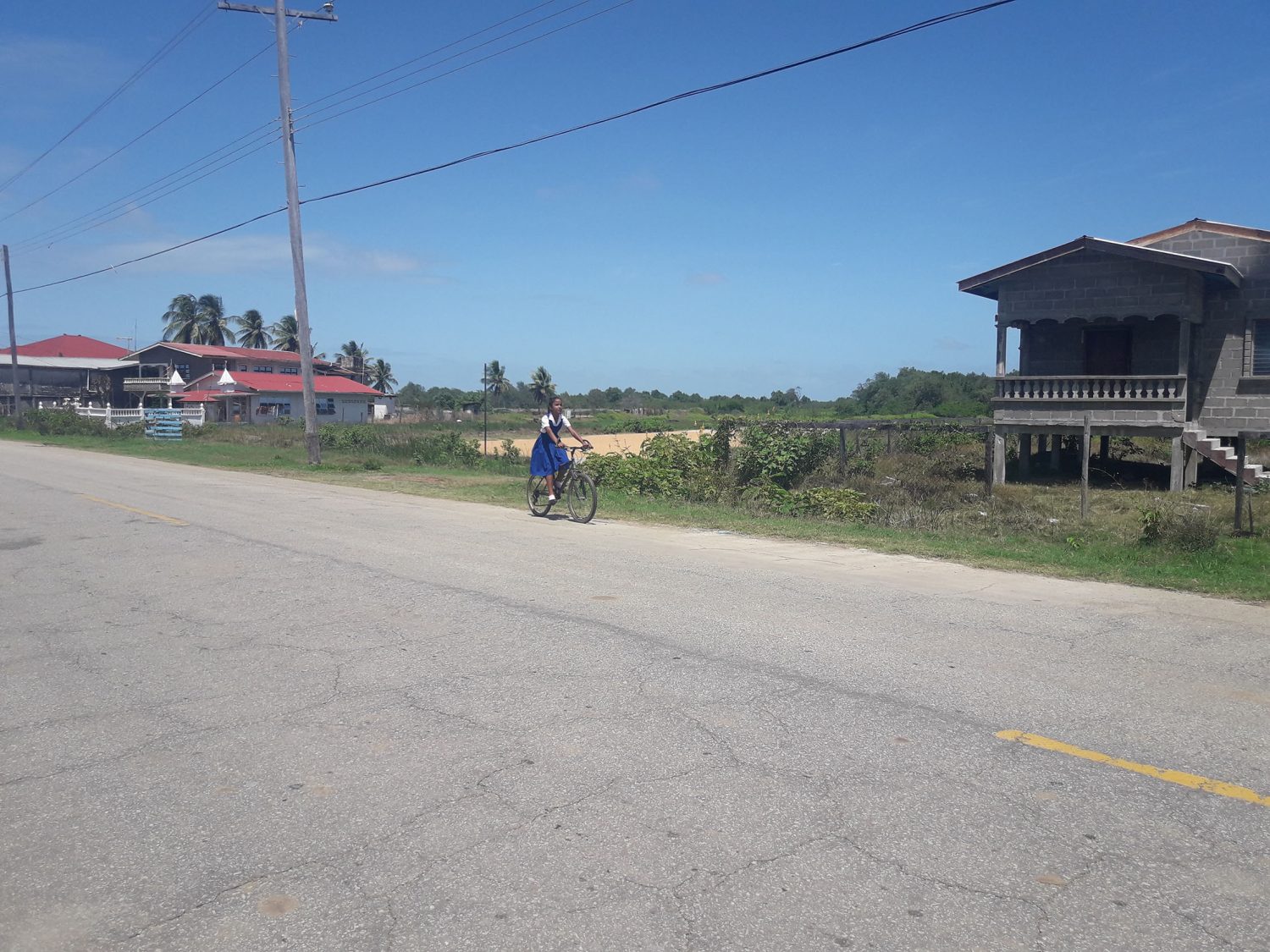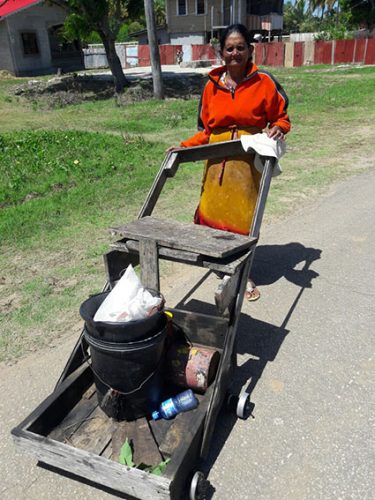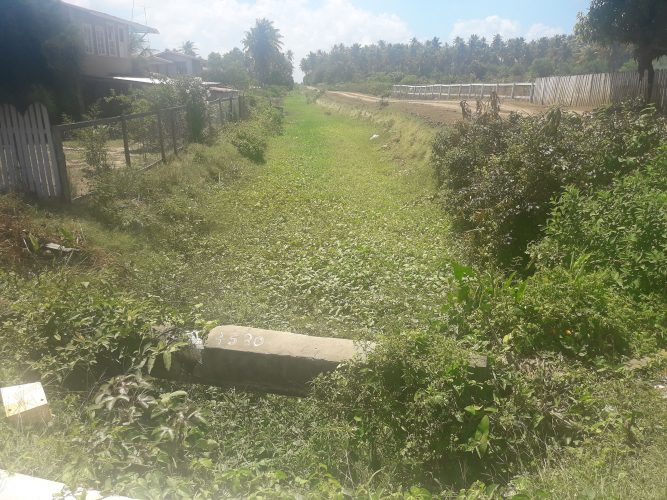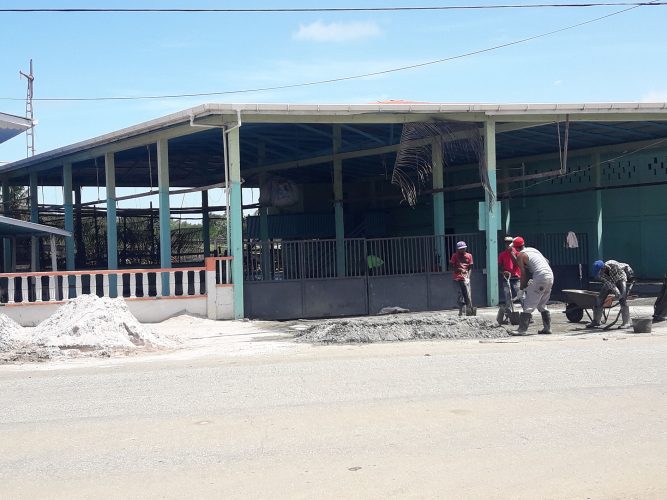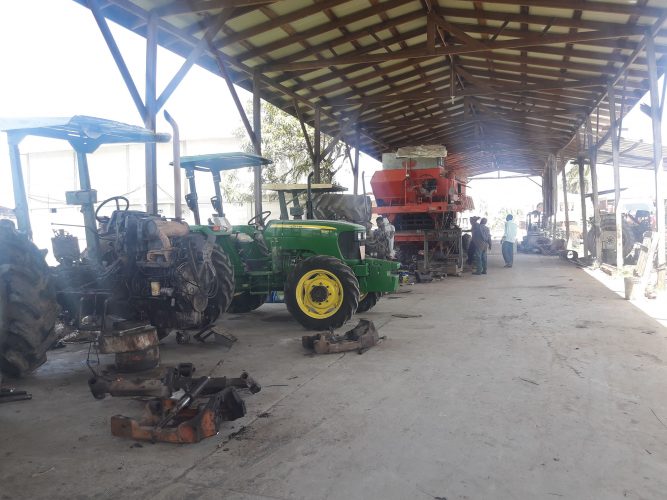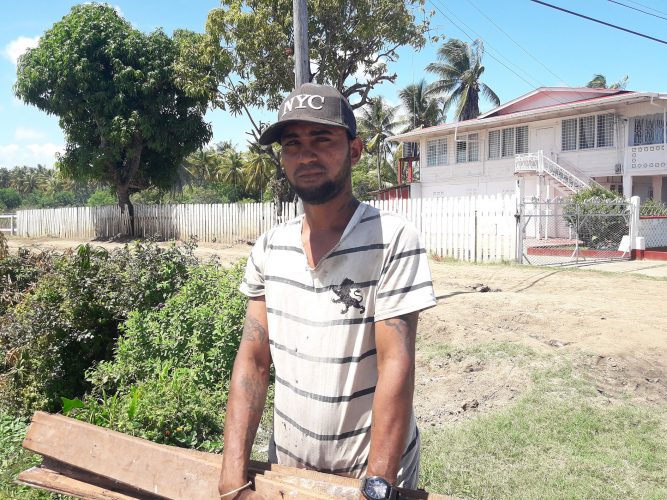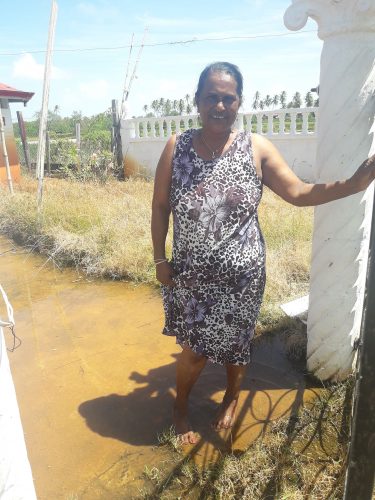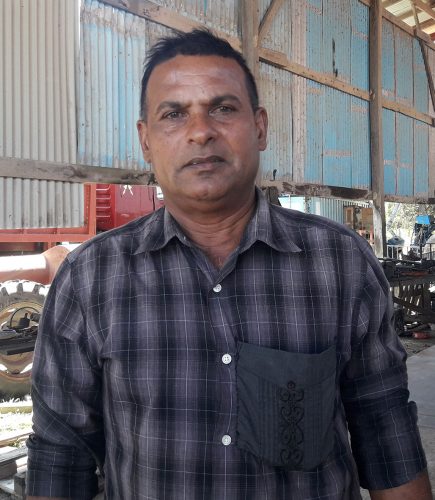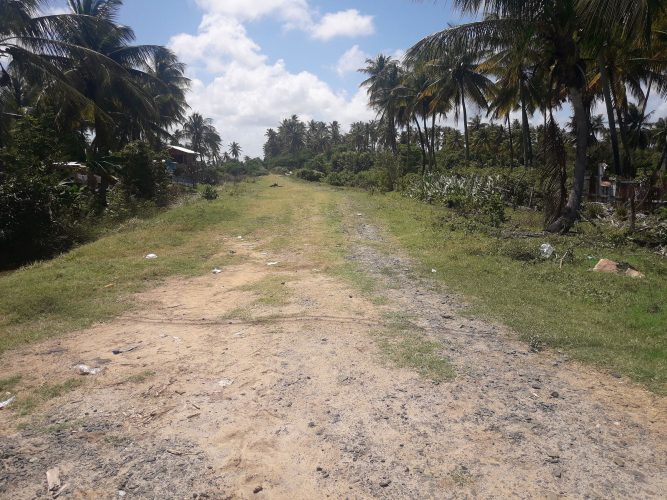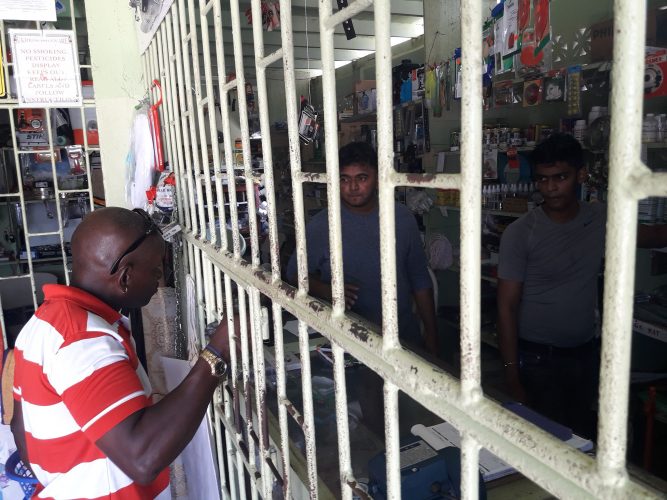Story and photos by Bebi Oosman
Bengal Village located on the Corentyne in Berbice used to be home to hundreds of Guyanese, however, migration to foreign lands has seen the numbers greatly diminished. Those who remain are fiercely loyal to their village.
The village, it was said, was named by Indian immigrants who were given land in that area after their indentureship ended. The immigrants, according to villagers, decided to name the village after the place in India from whence they came.
When The World Beyond Georgetown visited, almost all of the villagers were busy doing something or the other related to farming. According to some of the villagers, at present, farmers are servicing their machines patiently awaiting the end of the first rice crop to reap from their cultivated lands.
Residents also boasted about the availability of farming land in the area, according to most, Bengal has the “best land” for farming.
Labourer, Anil Persaud, 29, who was born, and grew up in the village, said times have changed drastically as residents have migrated. “Most of the houses lock down, not more than 20 people living in this village right now,” he said.
Persaud said he is on the path of building his life, so that in his old age, he can relax without any worries, more so, any financial worries. “It is a good village to live, as long people ready to work,” said the man who has the goal of financial stability in mind.
According to one of the oldest residents, Sattie Sukram, back in the day, Bengal belonged to one family. “Was one big family, couple brothers, back in the days,” she related.
Sukram who is a granddaughter of that first family, stated that at present most of the land in the area “is being rented out”. She said labourers who worked with the family have since developed the land and made their homes there.
She explained, that one major development over the years was that a koker was built in the backlands to drain water from the area. However, she said she believes that the koker is currently not functioning.
With farming being the major occupation in the village, one would think that Sukram, owner of Sukram’s Chemical Store, would benefit. However, while the woman boasted about her fellow residents, she said, persons enjoy heading to the townships now to purchase whatever items they need. “I think the trend these days is to get dressed and go to the towns, which is Rose Hall and Skeldon,” she said.
The woman stated that her business has been attacked by robbers, numerous times in the past.
Midway in Bengal Village lives Leekha Rambrich, the man who may have put the village on the map with his innovative business ideas. Despite being one of the most popular rice farmers and businessmen in Berbice, Rambrich said his main purpose in life was to ensure that each of his children benefited from a proper education, and this he did, as all of his children now have degrees in various fields.
Giving a bit of insight into his life, Rambrich said he started as a cash crop farmer and then moved into rice farming. He started with 20 acres and with hard work, dedication, blood, sweat and tears, he now plants 600 acres of rice. He added, “Me deh into cattle, into fishing, into poultry and now gone into rice milling.”
Rambrich is also the owner of the Bengal Gas Station and said he could not have asked for a better location to operate and build his business. “It is one of the most peaceful village in the entire Corentyne,” he said. However, despite this, “A lot of people move out over the years, only a few houses left.”
Touching on back in the day, Rambrich said, “… People used to live closer to the dams, you didn’t have public roads and so, this is 1962, 1963 time and then people start to move near to the road but since then it was a quiet village.”
Rambrich believes that in order for Bengal to see its full potential, more citizens need to consider moving into the village. “The village need more people to develop, there is not enough people in this village, all the lands left in this village, bushes a grow, only which village people live that will develop,” he said.
Rambrich has invested heavily in producing brown rice. While he produces a small amount of white rice also, he said, he is currently searching for ways invest into the necessary milling equipment to do so on a large scale.
His mill, he said, purchased from India, is something he has never regretted investing in. “It’s a very good plant, it was tested and running, it’s up and running about two months now.”
He currently employs over 18 persons, all from the Corentyne area.
Rambrich said the rice he produces is branded after the village, ‘Bengal Rice’, and his end goal is to “make it one of the best in this country. I’m selling locally throughout Region Six and some in Georgetown.”
Like any businessman, Rambrich also boasted of his product, “My rice does not smell, it has no smell at all and my rice does not run any water.”
Rambrich also once produced aromatic rice which he sold locally. He said he had met with some hiccups from the Guyana Rice Development Board (GRDB) and the government at that time and was asked to hold off on putting the rice in the market sometime in 2013. However, he said he is likely to begin producing the aromatic rice again. “Recently the minister and the board give me the go ahead,” he addded. According to Rambrich, the aromatic rice is being produced on a small scale in Guyana and he is looking forward to entering the market again.
Additionally, Rambrich, who is also President of the Rice Producers Association and Vice Chairman of Board of Directors for the GRDB is encouraging persons to seek employment in Bengal and even consider building their homes there.
Deoranie Pagoo, who has been care taking Bengal Vishnu Mandir since 1957, stated that the main issue in Bengal is that, “We need proper drainage, we need clearing up.”
Meanwhile, cousins Vicky, Ricky and Denesh were heading out of the backdam when World Beyond Georgetown visited. With smiles on their faces and their buckets filled with their catch in hands, the three men said, they head to the backdam often to fish for themselves in their spare time. Ricky, the youngest said, “We been go catch curry.” According to the cousins, Bengal is one of the best places to “catch fish”.
Usha Goeberdan of Number 43 Village, Corentyne was passing through Bengal selling fish, as she does on a daily basis. She said, “The people are nice; the village always quiet.”
She said that despite its small population, she receives her best sales in Bengal.
Villagers made calls for more emphasis to be placed on clearing drains and canals in the area. According to the villagers, some drains have not been cleared for several years now.
The residents also said that street lights along the Bengal main road would be welcome and appreciated.
